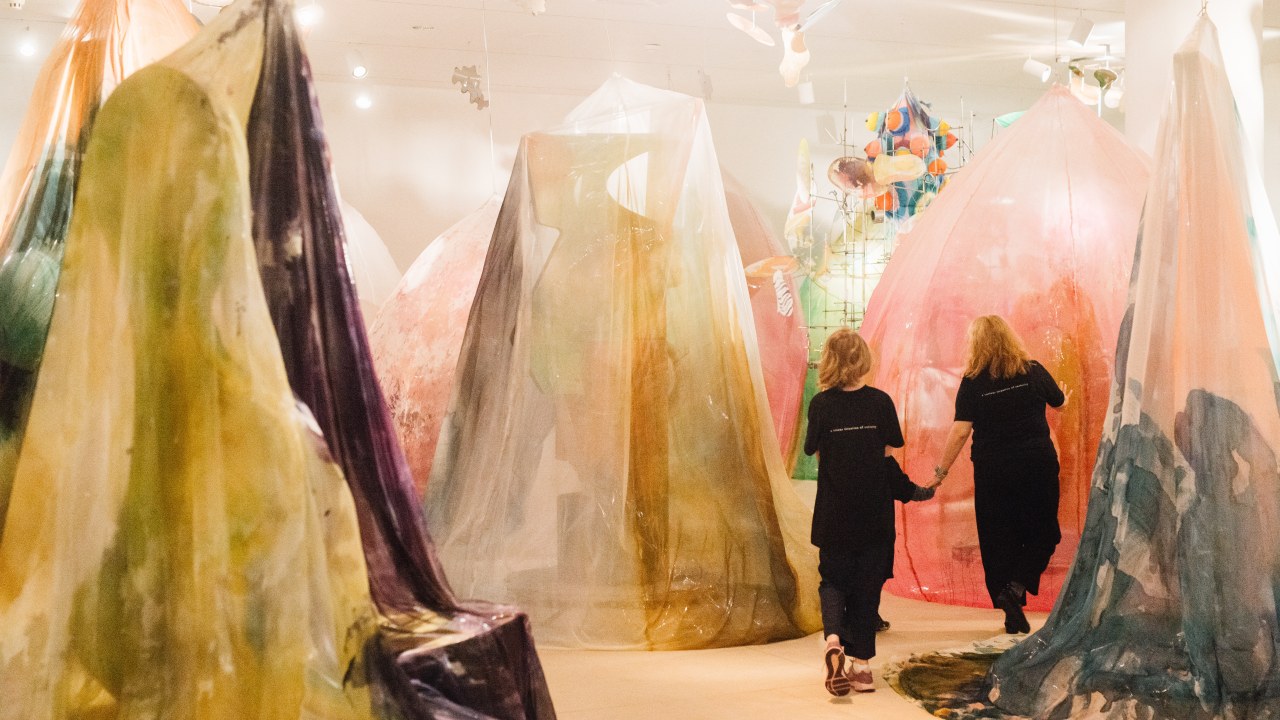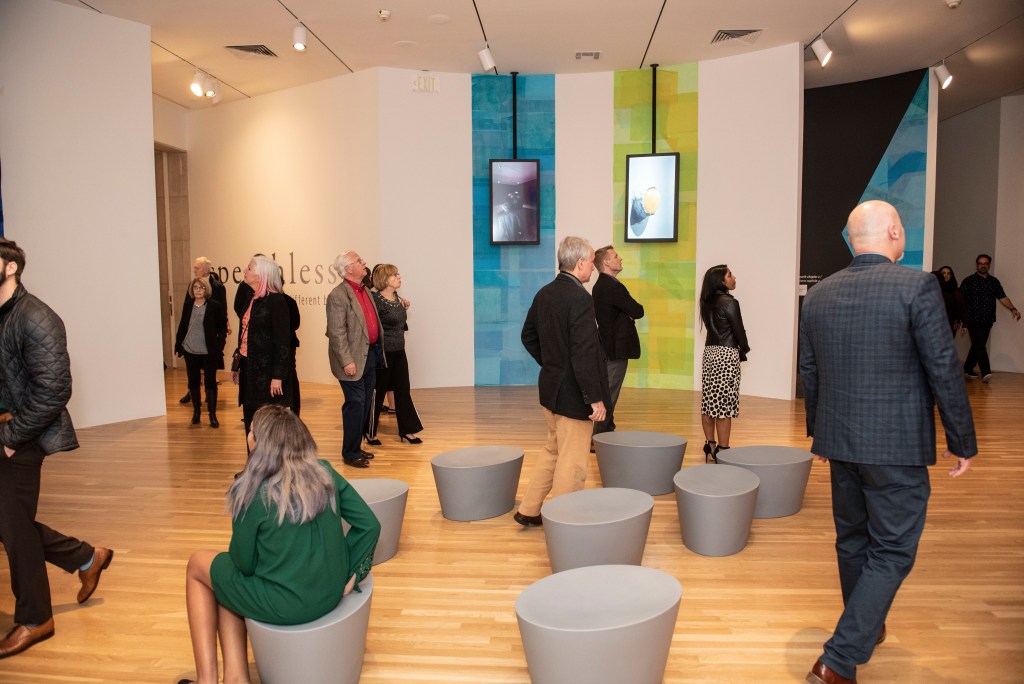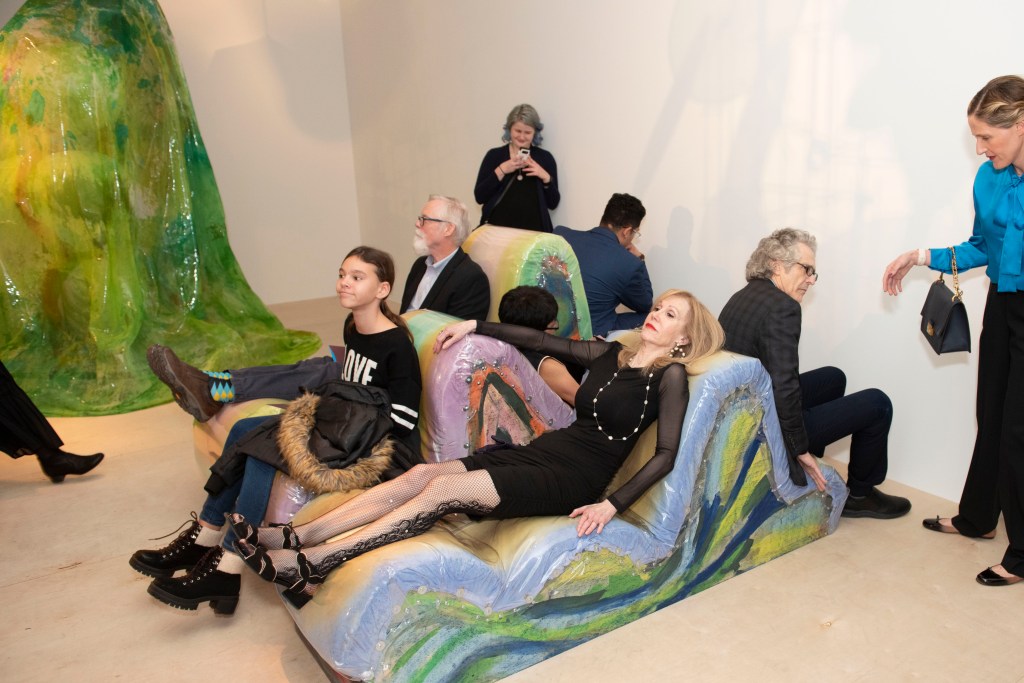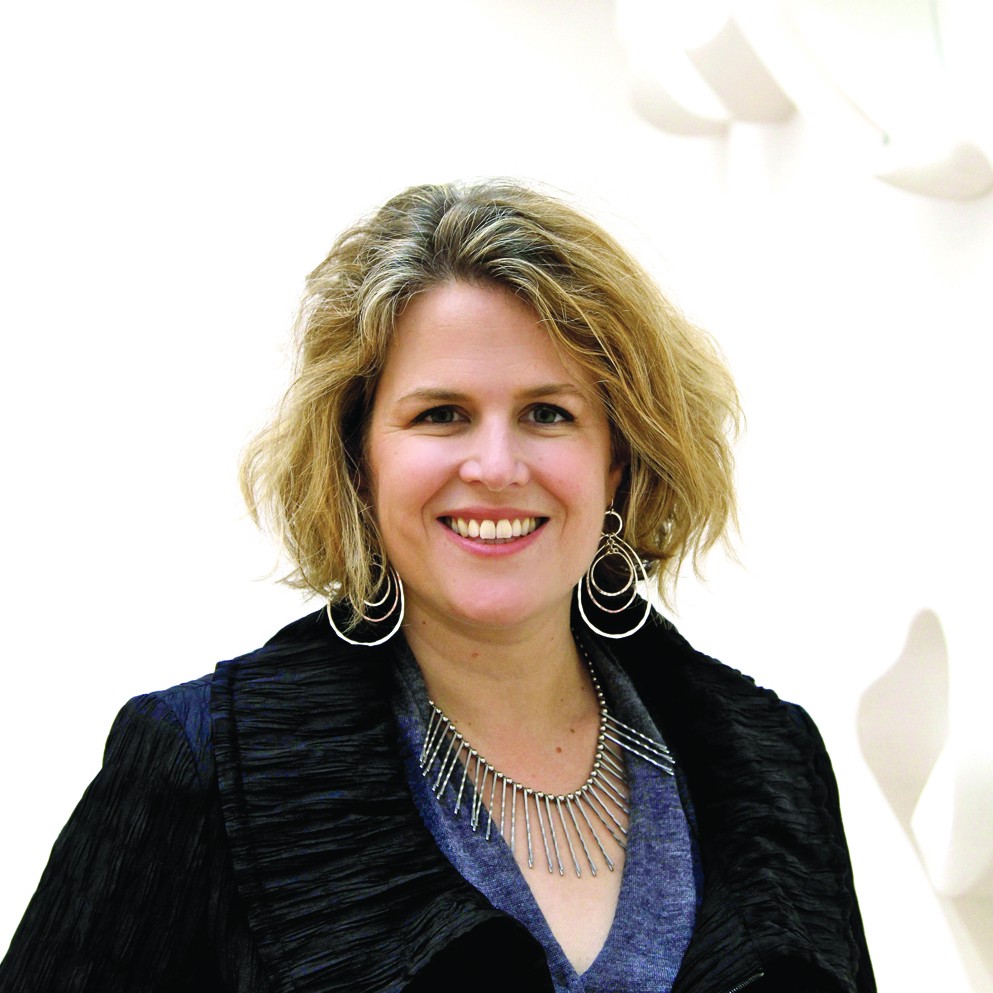
In January 2020, I authored a post for the Alliance Blog about speechless: different by design, an exhibition that I curated for the Dallas Museum of Art (DMA) and the High Museum of Art in Atlanta. The exhibition was an experiment—one that in its making involved seven artist-designers, dozens of museum staff members, nine scientists and researchers, many consultants, two museums, and the support of generous donors, foundations, and sponsors. After decades as a curator, with speechless I wanted to find new ways to reach more people with art—people who don’t interact with the visual in “standard” ways. speechless explored different ways of engaging with art and a more multi-modal path to presenting that diverges from the standard way of experiencing a museum exhibition—attending a show, viewing artworks (without touching them), reading labels, listening to audio guides, and so on.
This exhibition recognized that this model of experiencing museums, while widely practiced, is not the ideal model for all of us—it is not the way everyone learns. Expressed another way, the museum’s visiting public is not a monolith. Art museums excel at collecting, preserving, and displaying art. What we have not always excelled at is broadening the spectrum of how art is presented and how people engage with it. In offering unconventional multisensory experiences that went beyond speech and even beyond written words (in the form of conventional museum labels), speechless tested our understanding of the ways in which we experience the world through our senses.
At the time I wrote the initial post, speechless was on view in Dallas. Due to the pandemic, the exhibition closed a week earlier than scheduled and never made it to the High. Despite these unforeseen circumstances, I believe the experiment was a success, a rich and provocative learning experience both in the making and in the viewing, and broke new ground for what a museum show can be. But the true test for any museum exhibition is how it functions once on view. What did the visitors think? In developing the exhibition, we knew it would be important to capture their reactions, so we planned to conduct an evaluation once it was on view and publish an electronic publication sharing its findings and other lessons from speechless. This publication, different by design: the speechless report, started as a modest assessment but grew into a more ambitious publication that both documents our work and looks towards future possibilities.
The Evaluation
Because speechless offered a new model for the museum exhibition and visitor experience, it was important to us to gather real, measurable insights into how our audiences interacted with and responded to this show. To achieve this, we partnered with an independent evaluator, Dr. Azucena Verdín (who was previously on staff at the DMA as the museum’s evaluator), to design and implement a rigorous evaluation of the exhibition.
The speechless Visitor Research Study included two phases: a seventeen-question survey completed by 235 adult visitors immediately after viewing the exhibition, and follow-up telephone interviews with eight of those respondents to get more in-depth feedback. The full study and its results are reproduced in the different by design report, but overall we were excited to see how well the exhibition resonated with a wide range of audiences, in a variety of ways. Eighty-two percent of all visitors we surveyed gave it a positive rating, and it was especially gratifying to see positive responses from 80 percent of respondents who reported having a child with a disability and 73 percent of those who reported having a disability of their own.
Next Steps: Recommendations for a Path Forward
Developing speechless confirmed what we already suspected: that the museum visitor is not monolithic and that the neurodivergent population is not typically a primary consideration for museums. We know it is time to address this omission. The question we are left with is: How might we advocate for and expand our understanding of difference and disability while offering more accessible spaces and experiences?
The following is a preliminary list of next steps for museums to consider exploring to cultivate innovation around accessibility. The ideas range from very specific and particular vis-a-vis the experience of the DMA to much broader and/or more holistic for the museum field in general.
De-Escalation Spaces
We advocate for spaces in museums where individuals can decompress, center themselves, and self-soothe, such as the one we incorporated into speechless. In our de-escalation space, which was covered in acoustic foam to dampen the sound from the rest of the exhibition, we invited people to sit and rest in comfortable rocking chairs while using the self-soothing devices of weighted lap blankets and/or noise-cancelling headphones. But there are many ways to incorporate such spaces into museums. They do not need to be large or completely hidden, and can be as simple as some form of seating with one or two optional sensory-friendly accommodations in a small, semi-protected area in gallery spaces, special exhibitions, or other public areas. Instead of one larger space, they could consist of smaller, decentralized spaces tucked away throughout the building.
As one respondent to our study said, “I think it’s valuable to put those kinds of places in more spaces that we encounter because there’s hardly any…Like if you went to a typical mall on a Saturday, that would be so nice to have a room that’s just rocking chairs and beanbag pillows and quiet…I tend to get mentally very tired in overstimulating places like that.”
Flexible Spaces

The central space in speechless was a comfortable gathering area where people could sit, rest, and review videos about the installations. Throughout the exhibition, this proved to be useful for all visitors in multiple ways. In between interacting with the installations, they could return to this space to decide which gallery to visit next. If they came in a group of family or friends and wanted to go through the exhibition on their own, they could use it as a convenient meeting point to reconvene. The seating was on stools that could easily be adjusted to meet the needs of specific programs or groups. We recommend museums incorporate more flexible spaces like this into their layouts, whether within exhibitions or in non-gallery spaces, to ease the transition between spaces for all visitors.
Noise-Cancelling Headphones
After passing the soft, tactile title wall at the entrance, speechless visitors immediately encountered a wall of noise-cancelling headphones, which can help some visitors experience an exhibition more comfortably, particularly neurodivergent visitors and their caregivers. Making devices like these freely available to anyone who wants to use them, rather than having them available by special request at the visitor services desk, is a more friendly and accessible approach that destigmatizes neurodivergent individuals. We recommend museums find ways to incorporate these devices throughout their sites, with as few barriers to use as possible.
Staff Training and Education
For an accessibility-related initiative to succeed, all staff involved need to be well-informed and trained on best practices. It is important to create strong pathways of communication throughout the institution, implement ways to monitor whether staff members may be struggling with the information you communicate, and invest in more in-depth training for all staff members, both paid and volunteer, who interact regularly with visitors. For speechless, myself and other team members provided training sessions in the lead-up to the exhibition focusing on content, security, and the visitor experience. In hindsight, we should have continued conducting these sessions throughout the run of the show, to give staff the chance to share issues or questions that came up once it was open, and collectively explore solutions.
There is also a need to build flexibility into a museum’s procedures so that when projects like speechless, which diverge from the traditional ways of operating, require additional trainings and dialogue, there is a strong commitment to the process throughout the run of the exhibition by means of listening, evaluation, and dialogue within the institution and community before, during, and after the experience.
Non-Text-Based Interpretation

For this project, we provided information graphics and videos throughout the galleries in lieu of text-based labels and interpretation. As we expected, visitors said this made a difference in their experience of the exhibition. One participant in the study found the lack of written interpretation freeing, noting that not having to read text panels gave her a sense of relief from the self-imposed expectation that she must consume textual information as a normative behavioral practice in an art museum.
Experimenting with these non-text-based approaches, either in tandem with or without text, will provide for audience members who don’t always prioritize written language as their primary means of gathering information about art. Alternative interpretation approaches could also explore other sensory options such as sound, taste, or smell. Likewise, options could be explored in the digital sphere to provide information, context, and interpretation through avenues such as podcasts, videos, graphics, and other modalities.
Interpretation for the Visually Impaired and Others
Because art museums are typically so visually focused, accommodating visually impaired visitors has not always been a priority for many, but there are simple measures that can help this population feel welcome. At the front of speechless, for instance, alongside the noise-cancelling headphones, we placed booklets offering information in Braille and with raised images to be available for everyone. The booklets were utilized and enjoyed by many visitors, not only the visually impaired, and observation suggests that they helped increase awareness of, interest in, and empathy for sensory differences. Similarly small but meaningful actions include welcoming the hearing-impaired through measures like captioning videos.
Another tool the DMA regularly provides is communication cards, which use labeled pictures to help people express common needs or feelings. While these cards were originally developed for visitors on the autism spectrum, they have also proven very helpful to those who are learning or do not speak English. Communication cards typically use a system of symbols called the Picture Exchange Communication System (PECS), but this system can have frustrating limitations in nuance, emotions, and aesthetics. (In fact, this frustration was an aspect of the original impetus for speechless.) As an alternative, our museum might explore developing card communication resources using works of art in the collection.
Providing Experiences for Our Wide Range of Visitors
speechless was multisensory and multi-modal, providing avenues of engagement for many different learning strengths and styles. This emphasis on inclusion and neurodiversity can be further explored at the DMA and elsewhere in exhibitions and programming. Our intention is to continue to be iterative, trying new ideas, expanding on ones that have been successful, and learning from and with our colleagues and communities.

This article is a modified excerpt from different by design: the speechless report, by Sarah Schleuning and Andrea Gollin, edited with Eric Zeidler, and published by the Dallas Museum of Art









This is fascinating and as an artist and visitor studies disciple, I am wondering if there is a published catalogue for this exhibition or something on line in pdf or on-line print. Thank you. Jan
Hi Jan! Looks like there is a virtual walkthrough of the exhibition at this page: https://speechless.dma.org/experience/. Also recommend checking out the previous blog post about the exhibition and the full visitor study report, which are both linked in this post.